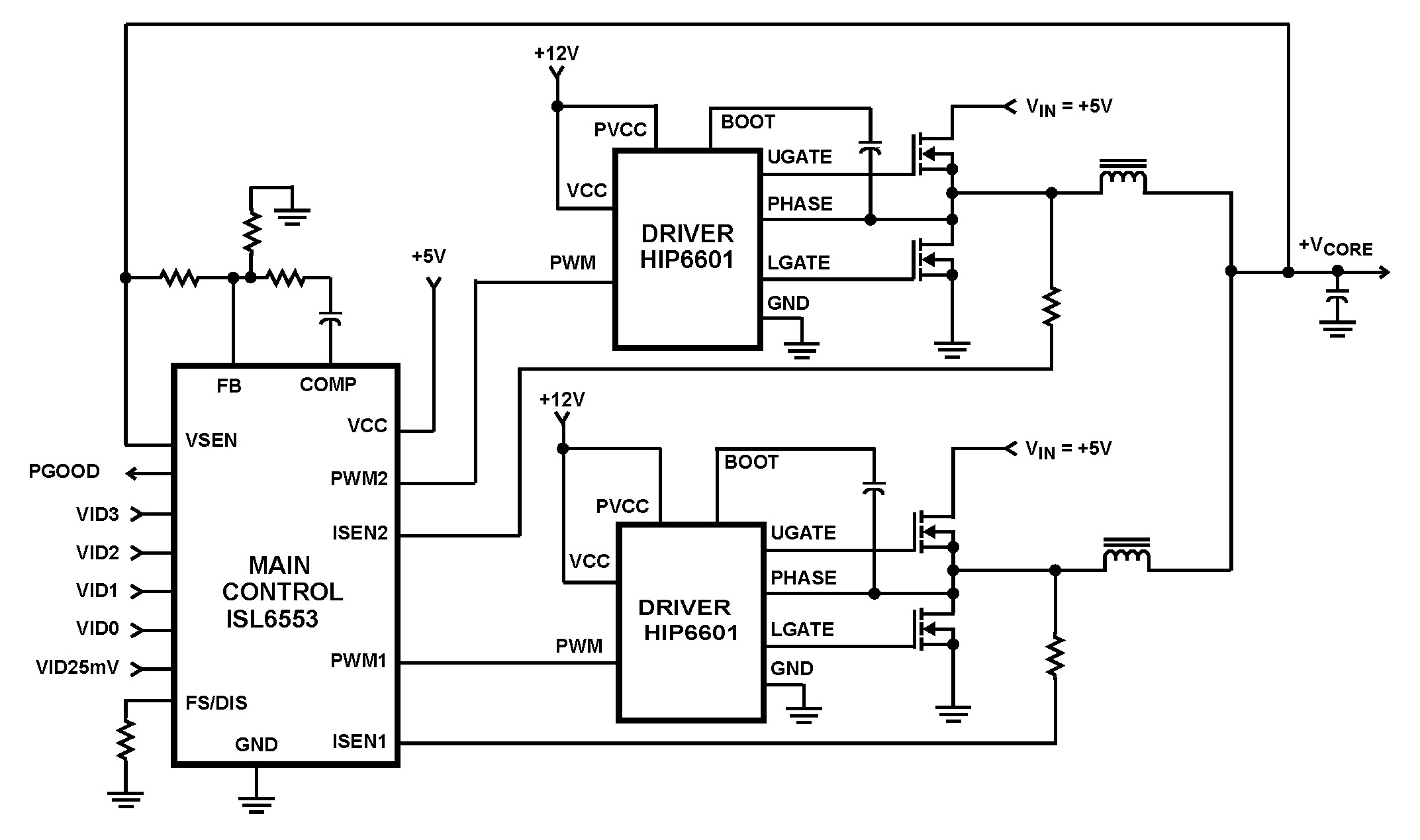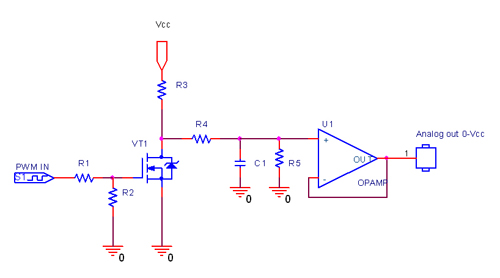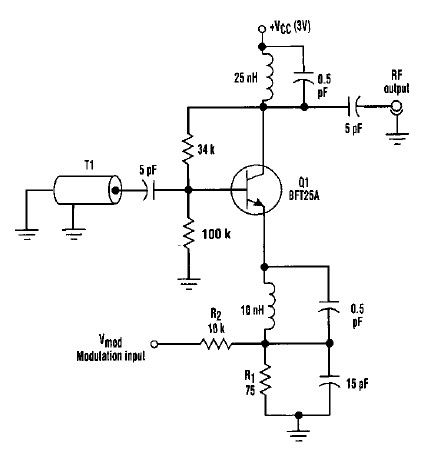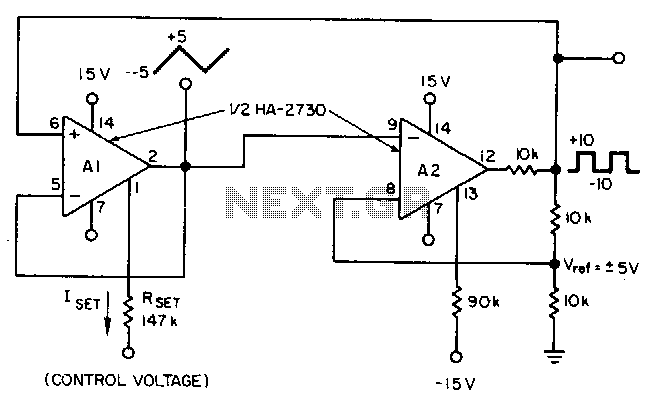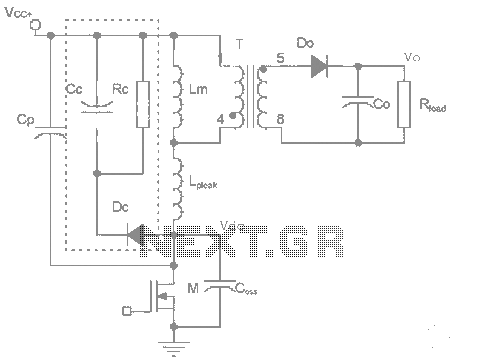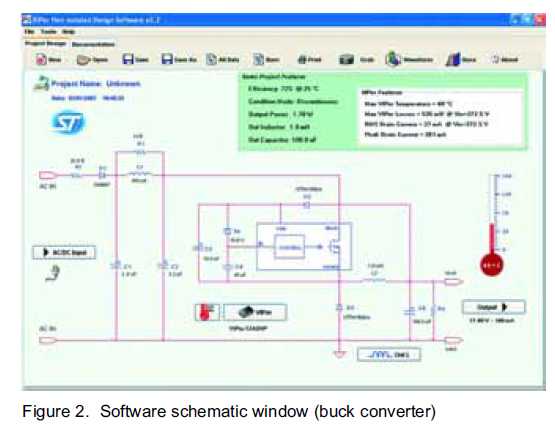
Buck Converter Design
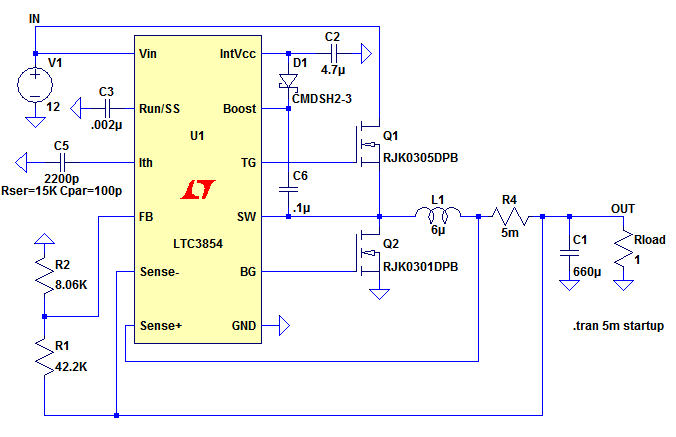
The top MOSFET activates, creating a short circuit between the input voltage (IN) and the left side of the inductor, L1. The inductor current increases according to the equation where V is the voltage across the inductor, L is the inductance value, and di/dt is the change in current over time through the inductor. With a fixed input voltage and a fixed output voltage, there is a consistent voltage across the inductor, resulting in a constant change in current over time (i.e., a ramp waveform). The output voltage at startup is 0V, making the initial voltage across the inductor equal to the input voltage. As the output voltage changes and reaches regulation, the equation adjusts. The peak inductor current is monitored by a small series resistor, R4, and when the voltage across this resistor reaches a specified value (as detailed in the converter's datasheet), the IC turns off the top MOSFET. Inductors resist current interruption; therefore, when the top MOSFET turns off, the inductor acts like a battery to maintain current flow. Referring to FIG 1, the output side of the inductor attempts to rise positively (to push current out of the right side) while the left side drops negatively (to sink current into the left side) in an effort to sustain the left-to-right current flow. Since the output side of the inductor is clamped by a capacitor, the left side drops negatively. At this moment, the IC activates the bottom MOSFET, Q2, to clamp the left side of the inductor to ground, allowing the inductor to preserve its current flow. When MOSFET Q2 activates, it also creates a short circuit to 0V at the bottom of capacitor C6. Since the top of C6 connects to the LTC3891's internal linear regulator (INTVCC) via diode D1, this capacitor charges to INTVCC + 0.3V. The voltage on this capacitor is subsequently used to provide a voltage higher than the input voltage to enable the top MOSFET to be activated. At startup, Q2 actually turns on before Q1 to charge the flying capacitor, C6, allowing Q1 to be activated. FIG 2 illustrates an LTspice simulation showing the current ramping from 4.378A to 5.604A over 1.08µs, resulting in a change of 1,135,185 Amps per second, which aligns closely with previous calculations. Notably, the value of di/dt is determined solely by the inductance value and the voltage across the inductor, with the controller IC playing no role in setting the inductor ramp current. Additionally, it is important to calculate the duty cycle of the converter, defined as the ratio of the ON time of the top MOSFET to the total oscillation period. The duty cycle is dependent purely on the input and output voltages, independent of the controller IC or inductor value, as long as the inductor current does not fall to zero. The converter operates in continuous conduction mode (CCM) under these conditions. If the inductor current decreases to zero, the converter enters discontinuous conduction mode (DCM). In CCM, if the load current varies, the duty cycle of the converter and the amplitude of the ripple current remain constant. The circuit adjusts to changes in load current by modifying the midpoint of the inductor current (its DC offset). In FIG 2, the midpoint of the inductor current is 5A, and from FIG 1, the load is 1 Ohm, indicating a load current of 5A. If the load resistance increases to 2 Ohms, the ripple current and duty cycle will remain unchanged in steady state, but the DC offset current will reduce to 2.5A. The LTC3891 will be utilized to design a buck converter that converts from 24V to 5V, capable of supplying a load of 2A. The LTC3891 datasheet can be referenced for further information.
The described circuit operates as a buck converter utilizing the LTC3891 integrated circuit. The primary function of this converter is to step down the input voltage from 24V to a regulated output voltage of 5V while delivering a maximum load current of 2A. The operation begins with the top MOSFET (Q1) being activated, which initiates the current flow through the inductor (L1). The inductor current increases linearly due to the voltage across it, which is determined by the input voltage and the output voltage.
As the output voltage rises, the control mechanism within the LTC3891 monitors the current through a sensing resistor (R4). Once the sensed voltage across R4 reaches a predetermined threshold, the LTC3891 deactivates Q1, allowing the inductor to maintain its current flow. This is critical because inductors resist rapid changes in current. The bottom MOSFET (Q2) is then activated to clamp the inductor to ground, maintaining the current flow and preventing voltage spikes that could damage the circuit components.
The design also incorporates a flying capacitor (C6), which is charged during the operation to provide the necessary gate drive voltage for the top MOSFET. This capacitor is charged to a voltage higher than the input voltage, ensuring that Q1 can be turned on effectively after Q2. The feedback mechanism ensures that the output voltage remains stable, adjusting the duty cycle based on load conditions. The converter operates in continuous conduction mode (CCM) under normal conditions, maintaining efficiency and performance even with varying load currents.
The circuit's performance can be simulated using LTspice or similar software, allowing for analysis of current waveforms and verification of design parameters. The characteristics of the inductor, the switching frequency, and the load conditions are all crucial factors in determining the efficiency and stability of the buck converter. Overall, the LTC3891 provides a robust solution for voltage regulation in applications requiring step-down conversion from a higher input voltage while maintaining efficiency and output stability.The top MOSFET switches on creating a short circuit between the input voltage (IN) and the left hand side of the inductor, L1. The inductor current ramps up according to the equation where V is the voltage across the inductor, L is the inductance value and di/dt is the change in current with time through the inductor.
Thus with a fixed input volta ge and a fixed output voltage, there is a fixed voltage across the inductor thus the change in current with time is constant (i. e. a ramp waveform). The output voltage on startup is 0V, so the initial voltage across the inductor is equal to the input voltage.
However, as the output voltage changes (and then reaches regulation) the above equation becomes The peak inductor current is sensed by a small series resistor, R4, and when the voltage across this resistor equals a certain value (see the specific converter`s datasheet) the IC switches off the top MOSFET. Now, inductors do not like having their current interrupted, so when the top MOSFET switches off, the inductor behaves like a battery to try to maintain the current flow.
Referring to FIG 1, output side of the inductor tries to fly positive (to push current out of the right hand side of the inductor) and its switched side (the left hand side) flies negative (to try and sink current into its left hand side) in an effort to maintain the left to right current flow. Since the output side of the inductor is clamped by a capacitor, the left hand side flies negative. At this point the IC switches on the bottom MOSFET, Q2, to clamp the left hand side of the inductor to ground and enable the inductor to maintain its current flow.
When MOSFET Q2 switches on, it also provides a short circuit to 0V at the bottom of capacitor C6. Since the top of C6 is connected to the LTC3891`s internal linear regulator (INTVCC) via diode D1, this capacitor charges to INTVCC 0. 3V. The voltage on this capacitor is then used to provide a voltage higher than the input voltage to enable the top MOSFET to be switched on.
Indeed, at startup, Q2 actually switches on before Q1 to charge the flying capacitor, C6, to enable Q1 to be switched on. FIG 2 shows an LTspice simulation with the current ramping from 4. 378A to 5. 604A over 1. 08us, a change of 1, 135, 185 Amps per second not too far off what was calculated above. It is interesting to note that the value of di/dt is determined ONLY by the inductance value and the voltage across the inductor.
The controller IC has nothing to do with setting the inductor ramp current. It is also useful to calculate the duty cycle of the converter. The duty cycle is the ratio of the ON time of the top MOSFET to the total period of oscillation. It is interesting to note that the duty cycle is purely dependent on the input and output voltages and has nothing to do with the controller IC or inductor value. The above is true as long as the inductor current does not fall to zero. The converter is then said to be operating in continuous conduction mode (CCM). If the inductor current ramps down to zero, the converter is then in discontinuous conduction mode (DCM).
In CCM if the load current changes, the duty cycle of the converter and the amplitude of the ripple current remain the same. The circuit responds to a change in load current by changing the midpoint of the inductor current (its dc offset).
Indeed it is also true that the average inductor current in a buck converter is equal to the load current. In FIG 2 we can see that the midpoint of the inductor current is 5A and it can be seen from FIG 1 that our load is 1 Ohm, thus the load current is 5A.
If the load resistance were increased to 2 Ohms, the ripple current and duty cycle would remain unchanged (in the steady state), but the dc offset current would fall to 2. 5A. We are going to use the LTC3891 to design a buck converter that converts from 24V to 5V and can supply a load of 2A.
The LTC3891 datasheet can be dow 🔗 External reference
The described circuit operates as a buck converter utilizing the LTC3891 integrated circuit. The primary function of this converter is to step down the input voltage from 24V to a regulated output voltage of 5V while delivering a maximum load current of 2A. The operation begins with the top MOSFET (Q1) being activated, which initiates the current flow through the inductor (L1). The inductor current increases linearly due to the voltage across it, which is determined by the input voltage and the output voltage.
As the output voltage rises, the control mechanism within the LTC3891 monitors the current through a sensing resistor (R4). Once the sensed voltage across R4 reaches a predetermined threshold, the LTC3891 deactivates Q1, allowing the inductor to maintain its current flow. This is critical because inductors resist rapid changes in current. The bottom MOSFET (Q2) is then activated to clamp the inductor to ground, maintaining the current flow and preventing voltage spikes that could damage the circuit components.
The design also incorporates a flying capacitor (C6), which is charged during the operation to provide the necessary gate drive voltage for the top MOSFET. This capacitor is charged to a voltage higher than the input voltage, ensuring that Q1 can be turned on effectively after Q2. The feedback mechanism ensures that the output voltage remains stable, adjusting the duty cycle based on load conditions. The converter operates in continuous conduction mode (CCM) under normal conditions, maintaining efficiency and performance even with varying load currents.
The circuit's performance can be simulated using LTspice or similar software, allowing for analysis of current waveforms and verification of design parameters. The characteristics of the inductor, the switching frequency, and the load conditions are all crucial factors in determining the efficiency and stability of the buck converter. Overall, the LTC3891 provides a robust solution for voltage regulation in applications requiring step-down conversion from a higher input voltage while maintaining efficiency and output stability.The top MOSFET switches on creating a short circuit between the input voltage (IN) and the left hand side of the inductor, L1. The inductor current ramps up according to the equation where V is the voltage across the inductor, L is the inductance value and di/dt is the change in current with time through the inductor.
Thus with a fixed input volta ge and a fixed output voltage, there is a fixed voltage across the inductor thus the change in current with time is constant (i. e. a ramp waveform). The output voltage on startup is 0V, so the initial voltage across the inductor is equal to the input voltage.
However, as the output voltage changes (and then reaches regulation) the above equation becomes The peak inductor current is sensed by a small series resistor, R4, and when the voltage across this resistor equals a certain value (see the specific converter`s datasheet) the IC switches off the top MOSFET. Now, inductors do not like having their current interrupted, so when the top MOSFET switches off, the inductor behaves like a battery to try to maintain the current flow.
Referring to FIG 1, output side of the inductor tries to fly positive (to push current out of the right hand side of the inductor) and its switched side (the left hand side) flies negative (to try and sink current into its left hand side) in an effort to maintain the left to right current flow. Since the output side of the inductor is clamped by a capacitor, the left hand side flies negative. At this point the IC switches on the bottom MOSFET, Q2, to clamp the left hand side of the inductor to ground and enable the inductor to maintain its current flow.
When MOSFET Q2 switches on, it also provides a short circuit to 0V at the bottom of capacitor C6. Since the top of C6 is connected to the LTC3891`s internal linear regulator (INTVCC) via diode D1, this capacitor charges to INTVCC 0. 3V. The voltage on this capacitor is then used to provide a voltage higher than the input voltage to enable the top MOSFET to be switched on.
Indeed, at startup, Q2 actually switches on before Q1 to charge the flying capacitor, C6, to enable Q1 to be switched on. FIG 2 shows an LTspice simulation with the current ramping from 4. 378A to 5. 604A over 1. 08us, a change of 1, 135, 185 Amps per second not too far off what was calculated above. It is interesting to note that the value of di/dt is determined ONLY by the inductance value and the voltage across the inductor.
The controller IC has nothing to do with setting the inductor ramp current. It is also useful to calculate the duty cycle of the converter. The duty cycle is the ratio of the ON time of the top MOSFET to the total period of oscillation. It is interesting to note that the duty cycle is purely dependent on the input and output voltages and has nothing to do with the controller IC or inductor value. The above is true as long as the inductor current does not fall to zero. The converter is then said to be operating in continuous conduction mode (CCM). If the inductor current ramps down to zero, the converter is then in discontinuous conduction mode (DCM).
In CCM if the load current changes, the duty cycle of the converter and the amplitude of the ripple current remain the same. The circuit responds to a change in load current by changing the midpoint of the inductor current (its dc offset).
Indeed it is also true that the average inductor current in a buck converter is equal to the load current. In FIG 2 we can see that the midpoint of the inductor current is 5A and it can be seen from FIG 1 that our load is 1 Ohm, thus the load current is 5A.
If the load resistance were increased to 2 Ohms, the ripple current and duty cycle would remain unchanged (in the steady state), but the dc offset current would fall to 2. 5A. We are going to use the LTC3891 to design a buck converter that converts from 24V to 5V and can supply a load of 2A.
The LTC3891 datasheet can be dow 🔗 External reference
Warning: include(partials/cookie-banner.php): Failed to open stream: Permission denied in /var/www/html/nextgr/view-circuit.php on line 713
Warning: include(): Failed opening 'partials/cookie-banner.php' for inclusion (include_path='.:/usr/share/php') in /var/www/html/nextgr/view-circuit.php on line 713
